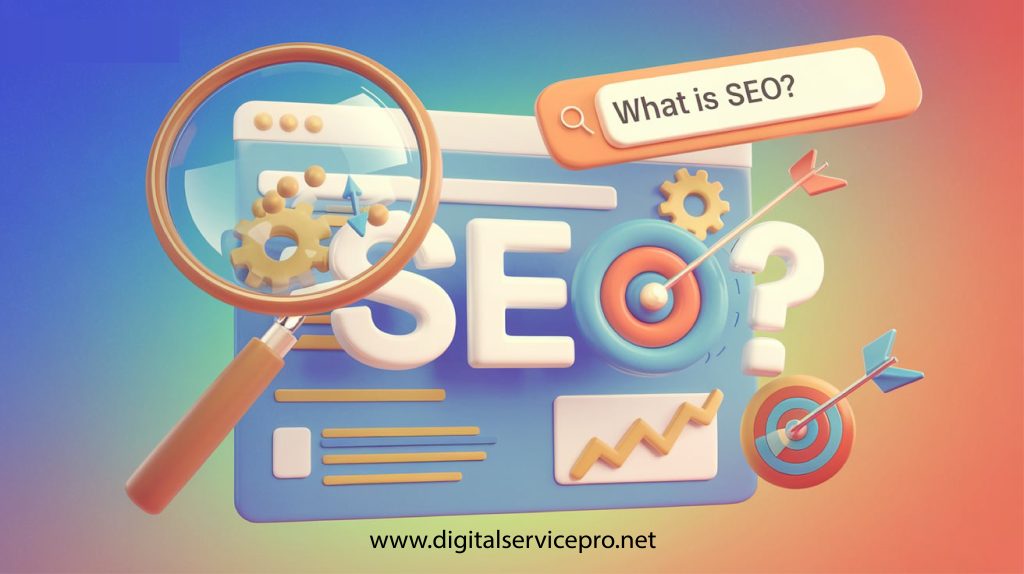What is SEO?

Search Engine Optimization (SEO) is a critical digital marketing strategy used to enhance a website’s visibility in search engine results pages (SERPs) like Google, Bing, and Yahoo. SEO focuses on improving both the quality and quantity of organic (non-paid) traffic by ensuring that a website is easily discoverable by search engines and relevant to users’ queries. Here’s a more detailed breakdown of SEO:
Key Components of SEO:
- Involves optimizing the elements within a webpage, such as:
- Title tags and meta descriptions: Including relevant keywords to make pages more searchable.
- Content quality: Producing valuable, keyword-rich content that answers user queries.
- Internal linking: Linking pages within your site to improve navigation and structure.
- Keyword optimization: Using relevant keywords naturally within the text to align with user searches.
- Off-Page SEO:
- Focuses on improving a site’s authority and trustworthiness through external activities:
- Backlinks: Earning links from high-quality, authoritative websites signals to search engines that your site is credible.
- Social signals: Engagement on social platforms can indirectly affect your rankings by driving traffic and increasing brand visibility.
- Guest blogging: Writing for other websites to build links back to your own site.
- Technical SEO:
- Deals with the backend structure and performance of a website:
- Page speed: Faster websites provide better user experiences and rank higher.
- Mobile-friendliness: Ensuring the site is optimized for mobile users, as mobile searches dominate the web.
- Crawlability: Making sure search engine bots can easily index your pages.
- Structured data: Implementing schema markup to help search engines understand your content better.
- Local SEO:
- Aimed at optimizing your online presence for local search results. This is particularly important for brick-and-mortar businesses:
- Google My Business listing: Optimizing your business profile to appear in local search and map results.
- NAP consistency: Ensuring your Name, Address, and Phone Number are consistent across the web.
- Content Strategy:
- High-quality content is the cornerstone of effective SEO. Creating content that addresses user intent, answers questions, and provides value encourages engagement and helps rank higher on search engines.
- User Experience (UX) Optimization:
- Google now factors in user experience as a ranking signal. This includes:
- Page load times.
- Mobile usability.
- Ease of navigation.
- Interactive elements.
Benefits of SEO:
- Increased Visibility & Traffic: Higher rankings lead to more visibility, which translates into more visitors to your site.
- Cost-Effective: Unlike paid ads, SEO generates organic traffic, which doesn’t require ongoing payments per click.
- Better User Experience: SEO strategies often improve site usability, making it more navigable and enjoyable for users.
- Long-Term Results: Although it takes time to see results, SEO builds a strong foundation that delivers sustainable traffic and growth over time.
By focusing on both on-page and off-page strategies, businesses can ensure their content ranks higher in search results, attracts more visitors, and ultimately drives conversions.





